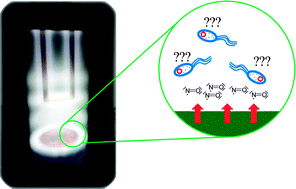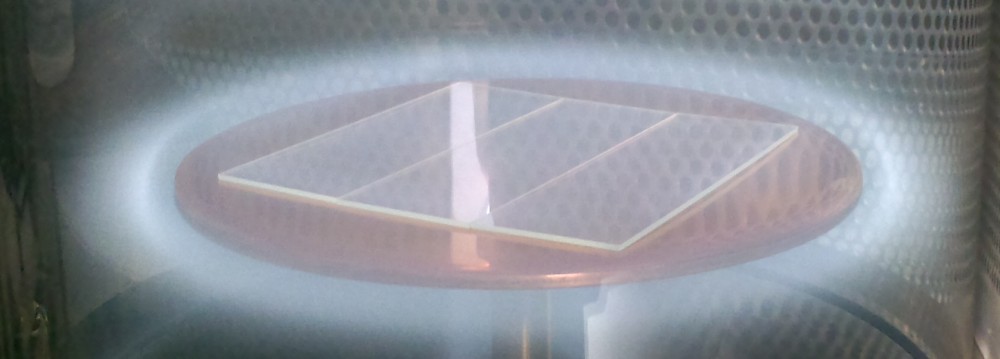
Plasma polymerized coatings that release nitric oxide are compatible with human cells and have a bacteriostatic property. Image (C) Royal Society of Chemistry.
Nitric oxide (NO) plays an incredibly important role in biology which is just beginning to be understood. From pulmonary dilation to wound healing, nitric-oxide based medical therapies are a huge and growing sector of human health.
A further aspect is NO’s ability to interfere with bacterial biofilm formation on surfaces. This opens up the way for new surface coatings that can release NO to stop infections from taking hold on medical devices. A particularly challenging problem, however, is how to easily make surface coatings that store this reactive gas molecule. Furthermore, how can one make such a device containing a volatile, reactive molecule that has a long shelf-life?
Our new publication in Chemical Communications by Thomas Michl and Hans Griesser from the Mawson Institute, University of South Australia shows a method by which coatings that release NO can be deposited on virtually any substrate material. Instead of volatile NO being trapped in the material, the surface coating contains a stable precursor of NO (an polymer containing a nitrosooxy group) that releases NO when exposed to solutions. Materials that were stored on the shelf for up to 2 months retained a bacteriostatic ability showing promise for their anti-biofilm ability. Importantly, when exposed to human stem cells, good compatibility was demonstrated showing that the material coatings were selectively bacteriostatic while being well tolerated by human cells.
The ability to deposit onto a range of different materials used in the medical industry as well as very good shelf life shows great promise for fabricating advanced medical devices with bacteriostatic properties.
Link to article:
